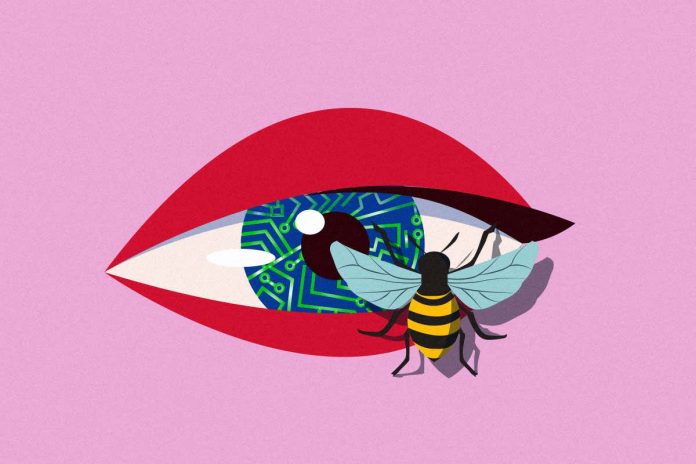[ad_1]
We need a revolution in artificial intelligence and learning from insects will help us achieve it, says James Marshall
Life
| Comment
16 February 2021

Michelle D’urbano
WHERE are all the intelligent robots? Despite huge recent strides in artificial intelligence, autonomous robots answering our every beck and call are still a long way off. To make that leap, we are going to need a revolution in AI – and I believe insects will be at the heart of it.
Big ideas in AI seem to come in waves. The first was the notion that creating an intelligent machine involves writing down enough rules for it to follow. Many people believed in this approach in the 1950s and 1960s, but its limitations soon became apparent because any situation that can’t easily be broken down into basic rules is out of reach. Making a machine that can play chess works, for example, but making one to recognise what is in an image doesn’t.
The second wave came in the 2000s when a technique called deep learning really took off. Instead of following rules to complete specific tasks, these systems follow rules for learning how to do the tasks themselves. This approach dates back to the 1980s, but it was only when huge amounts of computing power and data became available that it really began to work. Such systems mimic the visual cortex in primates, and so do a good job of simulating human perception, like recognising images. This wave has made digital assistants, like Amazon’s Alexa, possible.
Advertisement
But intelligence is more than a visual cortex. Second-wave algorithms can become good at one task, but then completely fail at a different, yet similar one. Any decent robot should be able to use and adapt what it already knows to tackle things it has never come across before.
The third wave… well that’s yet to be settled, but I think it will be by learning from nature that we will get the last piece of the puzzle.
Take honeybees, say. These little creatures are extraordinarily good at navigating their environment, they can react to new and novel situations and they display a wide array of different behaviours. Yet they achieve all this while having only around 1 million neurons in their tiny brains. By comparison, deep-learning AIs can require hundreds of thousands or even millions of “neurons” to perform just one task.
There is still much that we need to learn about primate brains, but with insects, we are closer than ever to being able to recreate their brains using software. My colleagues and I have been working on replicating the honeybee brain in silicon.
So far, we have reverse-engineered part of the visual system, and the navigation and memory centres. This has enabled us to create a fully autonomous drone in the lab with an onboard chip that directs it to avoid obstacles as it flies around. The algorithms we reverse-engineer are tremendously efficient, so use around 1 per cent of the computer power of deep learning, while running more than 100 times faster. They are also much more robust in dealing with unfamiliar situations, in the way that real brains are.
The next steps for this approach are to deploy more of the bee brain’s capabilities on silicon, and take the drones out of the lab. Indeed, this is precisely what university spin-out Opteran Technologies, which I co-founded, is leading the way in doing now.
Systems like this, where their brain circuits have been reverse-engineered from nature, should give highly efficient and robust algorithms for navigating the real world. And robots utilising them would benefit from hundreds of millions of years of evolution. The next wave in AI progress may just be within reach.
More on these topics:
[ad_2]
Source link











